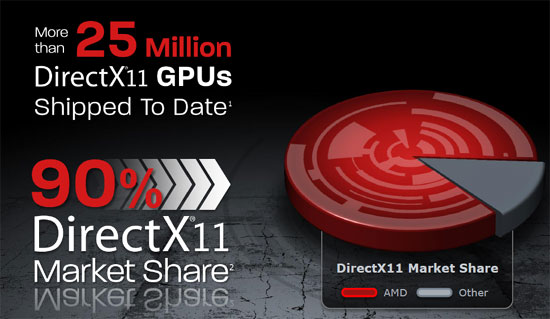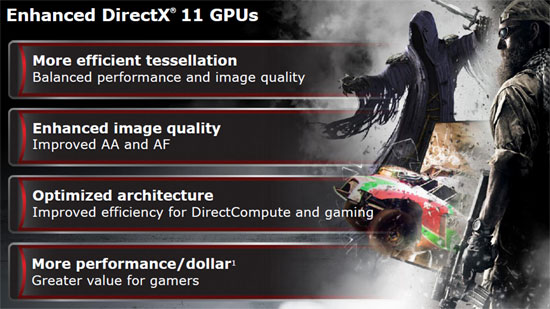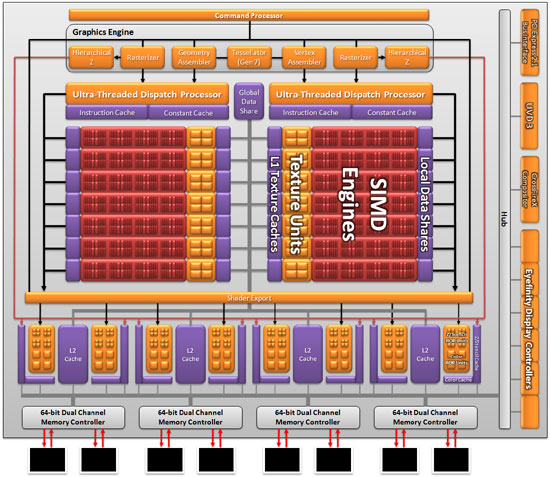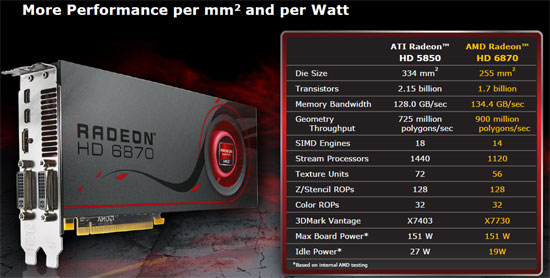AMD Radeon HD 6850 and 6870 CrossFire Video Card Review
AMD’s 2nd Generation DX11 Video Card – Radeon 6800
A little over a year ago, AMD released the ATI
Radeon HD 5000 family of graphics products and by doing so, AMD became the first company to offer DirectX 11 compatibility when Windows 7 was launched. This was a big deal and over the past year AMD has successfully released eleven video cards in the Radeon HD 5000 series and sold more than 25 million DX11 video cards. What is really interesting is that NVIDIA is still releasing more cards in their GeForce 400 series of products. NVIDIA has just five DirectX 11 cards released and the company still does not have a solid top-to-bottom DirectX 11 product stack like AMD does. AMD on the other hand is going to be releasing their next generation of GPUs today! The first two cards that are being released are the AMD Radeon HD 6870 and
AMD Radeon HD 6850 graphics cards. Unlike in past years AMD won’t be starting with their flagship video cards, but rather a pair of cards that are positioned in the Gamers Sweet Spot as they like to call it.

The Radeon HD 5800 series was the first DirectX11 technology on the market. With a six month lead time over NVIDIA, AMD has captured 90 percent of the DX11 market. 25 million units sold is a pretty significant number, and something they want to hang on to.

The first and most important thing to notice is that these are now AMD Radeon graphics cards. ATI is finally gone from product naming. Looking at the design goals for “Barts”, AMD wanted to have the performance of an Radeon HD 5800 series card at a lower power and lower price point. Simultaneously improving performance and functionality in areas like tessellation, image quality, Eyefinity, CrossFireX, and video decode. What they came away with is a very compelling package.

They were able to improve tessellation, add in a new Anti-Aliasing mode, improve efficiency for DirectCompute and gaming, and in turn still add value for gamers by lowering the price without killing performance.

In the overall scheme of things not much has changed with the die itself. The UVD engine has been updated to UVD 3, HDMI 1.4a is on board for 3D Blu-ray. The biggest changes we noticed is that there is now an improved Tesselator Engine and that there are fewer Stream Processors (SIMD Engines) compared to the Radeon HD 5800 series. To compensate for this AMD has employed a second Ultra Threaded Dispatch Processor.

This has added incredible performance efficiency to the die. On the same processing node of 40nm, AMD was able to go from 2.15 Billion Transistors to just 1.7 Billion. Overall die size is down close to 24%! It’s not often that you shrink the number of Texture Units and Stream Processors and get an increase in performance! Let’s take a look at the pricing and features.

Comments are closed.